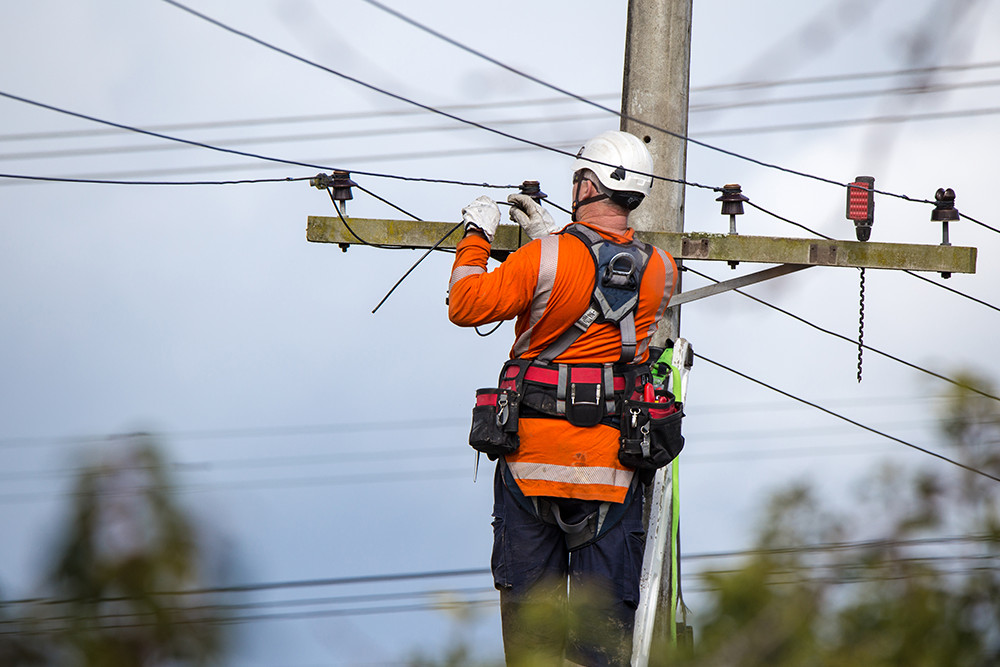
Falls from height are one of the most common causes of serious injuries and fatalities in UK workplaces. To avoid risks and protect yourself and your co-workers when working at height, all safety measures must be followed.
To comply with the law, risk assessments must be completed and proper safety controls put in place. A vital part of these controls is training. Not just induction training, but also regular refresher training to ensure that everyone is following best practices. This working at height toolbox talk is aimed at helping managers to educate their employees about what to do to stay safe when working at height.
The Risks of Working at Height
It’s crucial that you don’t underestimate the risks of working at height. A total of 26% of fatal injuries suffered by UK workers between 2017 and 2022 were due to falls from height, as shown by figures collected by the Health and Safety Executive (HSE). This is an average of 35 deaths every year.
Falls from height are:
- The leading cause of fatalities in the construction industry
- The third leading cause of fatalities in the food and drink manufacturing sector
- Account for 8% of all non-fatal workplace injuries across all UK industry sectors
Falls are the most common hazard of working at height. They can result in severe injuries and death, even if the fall is less than two metres. And it’s not just the impact of a fall that can cause injuries. You can suffer fall arrest injuries if you’re tangled in safety harnesses, go into a severe state of shock after an accident, or develop ongoing medical ailments caused by a fall.
The Hazards of Working at Height
The hazards of working at height include:
- Falling through fragile surfaces
- Overreaching while on ladders
- Unstable working platforms
- Unsuitable equipment
- Overloading ladders
- Working too close to electrical lines
- Working in hazardous weather conditions
- Falling tools or materials
- Slips and trips
- Placing ladders against weak surfaces
- Improperly securing scaffolding
- Poor visibility
What the Law Says About Working at Height
The two main pieces of health and safety legislation that provide guidelines for working at height are the Work at Height Regulations 2005 (WAHR) and the Health and Safety at Work etc. Act 1974 (HSWA 1974). While the HSWA 1974 details general rules to ensure workplace safety, the WAHR provides specific guidelines for working at height. Let’s go over the important details here.
Employer’s Duties Under WAHR
Under the WAHR, employers must:
- Avoid the need for working at height, where possible
- Conduct risk assessments for working at height
- Develop and implement effective measures to control risks
- Carefully plan and organise all tasks involving working at height
- Ensure that measures to prevent falls are taken before work commences
- Use protective measures such as guardrails, harnesses, safety nets or scaffolding
- Ensure that all equipment is in good working order
- Develop a working at height rescue plan
- Provide training for all staff working at height
Employee’s Duties Under WAHR
Employees also have obligations. Under WAHR you must:
- Follow all safety procedures and use any safety equipment correctly
- Conduct pre-checks of all equipment
- Report any safety concerns they may have
- Participate in all training that is provided
- Ensure you understand your roles
- Understand the risks involved in working at height
Penalties for Breaching WAHR
Failure to comply with these regulations can result in criminal charges being brought against the company or against an individual. The penalties for breaching can include unlimited fines or imprisonment.
Below Are 5 Essential Control Measures for Working at Height
These control measures will help to keep you safe when you’re working at height:
- Avoid working at height, if it’s possible
- Use equipment such as mobile elevating work platforms (MEWPs) or scaffolding instead of ladders, wherever possible
- Ensure all equipment is suitable for the task
- Control risks from fragile surfaces or falling objects
- Use personal protective equipment (PPE) such as safety belts, fall arresters, and lifelines
What You Need to Do Before Working at Height
Before starting any working at height task:
- Assess and inspect the work environment
- Mark or cordon off all fragile edges and surfaces with guard rails
- Identify all risks and evaluate the severity and likelihood of them occurring
- Put any appropriate control for working at height in place to eliminate or mitigate risk
- Prepare a detailed working at height plan
- Assign work tasks to competent people
- Inform colleagues of all hazards and risks
- Carefully inspect and test all equipment
How to Stay Safe While Working at Height
During any job that requires you to work from height for longer than 30 minutes, you should take as many precautions as reasonably possible. These precautions include:
- Complete as many tasks as you can from ground level
- Ensure all scaffolding or ladders are secured and stable
- Ensure ladders and scaffolding can bear the weight of workers and equipment
- Check that weather conditions are suitable
- Do not work in high winds, fog or heavy rain
- Use suitable PPE such as safety lines, harnesses, hard hats and safety shoes
- Check that all guardrails, toe guards and edge barriers are in place
- Confirm that the area is clear of powerlines or other obstructions such as trees
- Keep all working platforms clean and clear of debris
- Give your team clear instructions
- Make certain everyone understands what’s required of them
- Ensure all your team members are competent

Best Practices for Working at Height
- Always conduct a risk assessment
- You must be physically and mentally fit to complete the tasks required
- Use equipment such as crawling boards on sloping or fragile surfaces
- Secure tools and materials to avoid slips and trips
- Install toe guards to avoid falling objects
- Erect guardrails and issue safety harnesses
- Lower materials using chutes
- Cordon off all openings or fragile surface areas
- Restrict unauthorized access to the work area
- Ensure you are trained and competent for the task
Why Working at Height Training is Important
Training will help you to avoid accidents and eliminate or reduce the risks associated with working at height. With the right training, you can learn how to correctly assess working at height risks, know what type of controls to implement and develop an effective emergency plan if an incident does occur. Employers are legally required to provide working at height training for their staff.
Our Working at Height Training course gives you the knowledge you need to work at height safely. This course consists of one module that runs for approximately 35 minutes with a multiple-choice test at the end. If you pass you are awarded a downloadable, printable certificate immediately. Make sure you keep your training up to date to keep yourself safe and compliant.






















































































































































































































































































































































































































































































































































